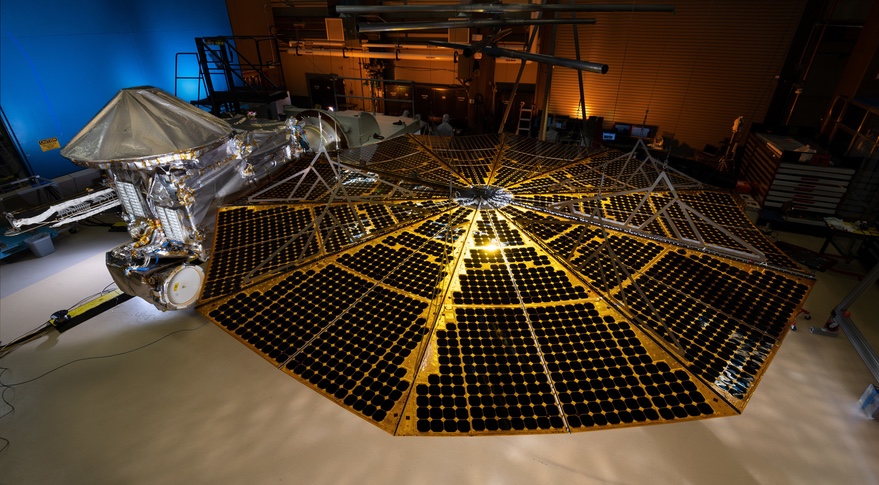Products You May Like
WASHINGTON — Engineers are investigating why one of the two solar arrays on NASA’s Lucy spacecraft may have failed to lock into place when deployed after launch Oct. 16.
In an Oct. 17 statement, NASA said that while the spacecraft is healthy, one of the two circular solar panels “may not be fully latched” after its deployment. The solar arrays deployed in the first half-hour after separation from the Centaur upper stage of the Atlas 5 rocket that launched it early Oct. 16.
Both solar panels are generating power, the agency stated, and there are no other problems with the spacecraft. “In the current spacecraft attitude, Lucy can continue to operate with no threat to its health and safety,” NASA said in the statement. “The team is analyzing spacecraft data to understand the situation and determine next steps to achieve full deployment of the solar array.”
“This team has overcome many challenges already and I am confident they will prevail here as well,” Thomas Zurbuchen, NASA associate administrator for science, tweeted Oct. 17.
Lucy’s two solar panels are each 7.3 meters in diameter. Stored in a folded configuration, they were designed to unfurl “like Chinese fans,” said Joan Salute, associate director for flight programs in NASA’s planetary science division, at a prelaunch briefing Oct. 14.
The arrays have a combined 51 square meters of solar cells. That large area is needed since the spacecraft will be flying out to Jupiter’s distance from the sun, where the sunlight is only a few percent as powerful as at Earth. “That enables Lucy to travel further away from the sun than any other solar-powered spacecraft to date,” said Katie Oakman, Lucy structures and mechanisms lead at Lockheed Martin Space, at the Oct. 14 briefing. Lockheed was the prime contractor for Lucy, although the solar arrays were built by Northrop Grumman.
In the vicinity of the Earth, Lucy’s panels can generate 18 kilowatts of power. However, when flying by the Trojan asteroids that are the destination of the mission, the arrays will produce only 500 watts of power, still sufficient to operate the spacecraft and its three main instruments.
She added there was no specific design requirement for circular arrays versus more conventional rectangular ones, but that those offered the most area while fitting in the confines of the Atlas payload fairing. “This particular design really enables us to stow up closely and tightly next to the spacecraft for launch,” she said. “Having any particular shape other than this really unique design wouldn’t enable us to get to that 51-meter-squared of active cell area and still fit within the launch vehicle fairing.”
It’s unclear if the problem will affect other work to check out the spacecraft after its launch. That includes deployment of the instrument pointing platform, on which the three major instruments are mounted, which is scheduled for about two days after launch.
